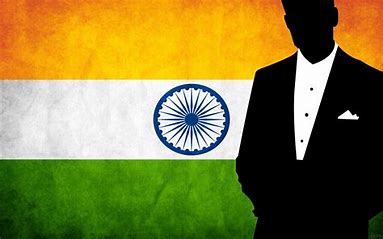The last ten years have witnessed an unprecedented evolution in India’s intelligence machinery.
Over the past decade, the contours of India’s intelligence apparatus have dramatically expanded. What was once viewed predominantly through the lens of the Intelligence Bureau (IB) and the Research and Analysis Wing (R&AW) has grown into a more multifaceted and dynamic structure, with a deeper reach and wider capabilities. Under Prime Minister Narendra Modi’s leadership, supported by an astute National Security Advisor, India’s approach to intelligence gathering, asset mobilisation, and national security strategy has undergone a transformative shift, reflecting a bold and proactive stance in dealing with threats both internal and external.
The last ten years have witnessed an unprecedented evolution in India’s intelligence machinery. No longer confined to the traditional roles of the IB and R&AW, intelligence task forces have diversified and become more inclusive, drawing on resources from various sectors including technology, academia, and even private enterprises. This broad-based approach ensures that India’s intelligence apparatus is better equipped to address the complex challenges of the modern security landscape.
Today, the integration of cyber intelligence, satellite surveillance, and advanced data analytics has created a more robust intelligence-gathering framework. The establishment of the National Technical Research Organisation (NTRO) and the Defence Intelligence Agency (DIA) are examples of how the intelligence network has expanded to encompass various specialised domains. These organisations work in tandem with IB and R&AW, but their roles are distinctly tailored to address the multifaceted nature of security threats in the digital age.
One of the most significant changes over the past decade has been the intensified mobilisation of intelligence assets. Where intelligence gathering was once largely a passive exercise, today it involves a more aggressive approach to preemptive and retaliatory actions. The utilisation of black operations (Black Ops), which were once considered taboo, has become an acceptable and sometimes necessary measure in India’s strategic playbook.
The era of merely monitoring threats is over; existential dangers from hostile organisations, terrorist groups, and rogue actors are being neutralised with precision and decisiveness. High-risk missions targeting insurgent groups in the Northeast, anti-national elements in Kashmir, and cross-border terrorists have demonstrated that India is willing to take the battle to the enemy’s doorstep. Covert operations, ranging from the surgical strikes in Pakistan-occupied Kashmir to the Balakot airstrikes, illustrate the Indian state’s resolve to neutralise threats before they escalate into full-blown crises.
While Black Ops and hard power tactics have been prominently discussed in recent years, India’s use of soft power in intelligence operations is an equally potent tool. It extends beyond traditional diplomatic efforts to influence adversaries and global opinion. This includes cultural diplomacy, strategic use of the media, and the projection of India’s civilisational ethos as a peace-loving yet determined nation.
The Modi government has utilised soft power effectively to shape narratives around India’s security issues, especially in international forums. For instance, countering the narratives of organisations like the Islamic State (ISIS) or Lashkar-e-Taiba (LeT) involves more than just kinetic military action; it requires addressing the ideological battlefront. The government’s strategic communication campaigns against radicalisation, both domestically and internationally, signify an intelligence approach that understands the need to win hearts and minds, not just wars.
India’s intelligence strategy under the Modi administration has found a delicate balance between overt and covert machinations. Overt actions, such as diplomatic offensives against state-sponsored terrorism, economic sanctions, and the exposure of foreign funding for anti-India activities, complement the covert actions carried out by the intelligence community. By blurring the lines between overt and covert operations, the government has been able to maintain plausible deniability while still sending a clear message to adversaries.
This blended approach has been critical in addressing complex threats such as terrorism. It reflects an understanding that counter-terrorism is not merely about neutralising terrorists but also about disrupting their networks, financing, and support structures. The banning of entities like the Popular Front of India (PFI), and targeted crackdowns on illicit financial
The Modi government’s intelligence strategy also extends to India’s evolving role in the Indo-Pacific, where the country seeks to counterbalance China’s growing influence and secure its maritime interests. Intelligence-sharing arrangements with like-minded nations, particularly through frameworks such as the Quad (Quadrilateral Security Dialogue) and partnerships with ASEAN countries, signify India’s increasing intelligence reach beyond its borders.
Furthermore, the deployment of maritime surveillance capabilities, cyber intelligence, and collaborations with countries like the United States, Japan, and Australia in areas such as anti-submarine warfare and space-based reconnaissance shows that India is not merely a regional power but a global player in intelligence.
While the expansion and diversification of India’s intelligence network have strengthened the country’s national security framework, challenges remain. Coordination between various intelligence agencies, protecting data sovereignty in an age of digital espionage, and addressing the changing nature of hybrid warfare will be critical areas for future growth. As India’s global influence continues to expand, its intelligence apparatus will need to be not only reactive but anticipatory, foreseeing threats and adapting strategies accordingly.
The Modi administration’s reimagining of India’s intelligence capabilities goes far beyond the traditional roles of the IB and R&AW. It reflects a paradigm shift in the country’s approach to national security—one that encompasses a broad spectrum of strategies ranging from aggressive black operations to sophisticated soft power tactics. In this new era, India is not just defending itself but asserting its position on the world stage, demonstrating a readiness to face existential threats head-on. The intelligence community is no longer limited by institutional boundaries; it is now a dynamic, multi-dimensional force that exemplifies a bold and assertive India.
Savio Rodrigues is the Founder and Editor-in-Chief of Goa Chronicle.

